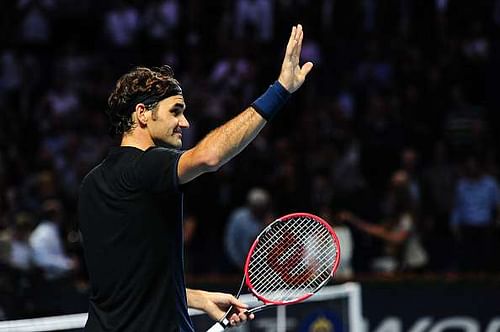
Is this the beginning of the end for Roger Federer?
Greatest Ever. Those words are not used lightly, but if anyone in the sport deserved them, it would be Roger Federer. After the legend, 34 years young, managed a strong semi-final finish at his favourite stomping grounds of Wimbledon, even those who had written him off courtesy his age were, perhaps, silenced.
Many looked forward to the return of ‘the’ RF, the man who had not won a Grand Slam since 2012 but had already shown signs of his old form. With Novak Djokovic gone, could this be the year Federer challenged for the title – and in a tennis fairytale, come right back to take it?
His progress to the semi-finals came in the midst of what has been an injury-riddled season for the Swiss, who has had multiple surgeries on a knee that appears not to be supporting the immense strain he has put both body and mind under.
But still, one would not be remiss in believing this was, in true Tolkein fashion, the Return of the King.
2016 is an Olympic year. Federer has doubles gold, but singles silver. It would be difficult for him to win gold, perhaps, given the sheer form of both Novak Djokovic and Andy Murray, but it could be time for him to shine yet again.
And then, Federer dashed the hopes of millions when he announced he was “done with tennis for the rest of the year.”
That meant no Federer at the US Open, and more importantly, no Federer at the Olympic Games. It would be unfair, perhaps, for fans to expect the Swiss to go on forever, but this was, by many belief systems, his last big chance at a final hurrah.
The signs, perhaps, had been showing for a while – it was fans who refused to accept them.
2016
Federer began the year well enough, and then multiple injuries would hit him in quick succession. It was his knee that kicked off his injury season, with the Swiss injured after drawing a bath for his children.
That meant he sat out a number of tournaments early on in the season, following which more problems would surface.
A back injury sidelined him into the clay court season, with Federer sitting out the Madrid Open before returning to the Rome Masters, where he eventually crashed out with a loss to Austrian wunderkind Dominic Thiem.
It was also to be a portend to the rest of his season.
In a testament to just how consistent Roger Federer has been throughout his career so far, his French Open withdrawal marked the first time in seventeen years that the Swiss had not been part of the main draw at a Grand Slam.
But he would be back in time to make his mark – and how – at Wimbledon!
And somehow, that made it better, and quickly, worse.
THAT Wimbledon injury
He taxed his body to its fullest in the quarter-final against Marin Cilic, taken to five sets as he ran across court with the athleticism of a much younger player whose body had not seen as many battle scars as his, and his fitness had been the talk of a number of analysts and followers.
And then, yet again, this time in the semis, he was taken to the edge by Canadian ace Milos Raonic, who has had his own injury struggles that sidelined what had seemed to be a promising career that may have peaked earlier than it has.
At their semi-final on Centre Court, it was Federer who, doing a long cross-court stretch, lost his footing and slipped. He got back to his feet quickly enough after a once-over from his medical team, he lost his momentum.
Could that have been the key moment?
Perhaps it was. In an interview following his loss, the 34-year-old said the fall had been like ‘no other I have had in my career so far.”
Federer has had a number of injuries this year, and has had a seris of them over his career. None, however, had been spoken of in those terms, least of all by the Swiss himself.
His ‘lingering’ back problem has been an issue for a handful of years now, but that did not hinder the ace from a number of titles in the interim. This injury was, and is different.
Federer has spoken himself hoarse about wanting to play “good tennis for a number of years”. He said it in his official announcement while withdrawing from the French Open, telling fans he was “waiting to be back at Roland-Garros in 2017.”
Now, he has said he is waiting for “many more years of good tennis to come”. While that will buoy fans of the Swiss ace, it may perhaps be naivete to believe that recovery will become easier for Federer over the years. Realistically, 2016 was likely his final shot at an Olympic medal; one that Federer has now put paid to. Could there be future titles in his future? By all means, given his sheer skill, his talent and caliber, yes.
But future Grand Slams? Given that a young, powerful crop of players is coming to the fore already, many of whom have successfully challenged the Swiss ace, it does it not seem as though matters will get any easier for Roger Federer in the coming years.
This may be Roger Federer’s swan song, but as fans and watchers of the ace, we are fortunate to have watched likely the most successful careers in the history of the sport, and one of its most beautifully played games.
